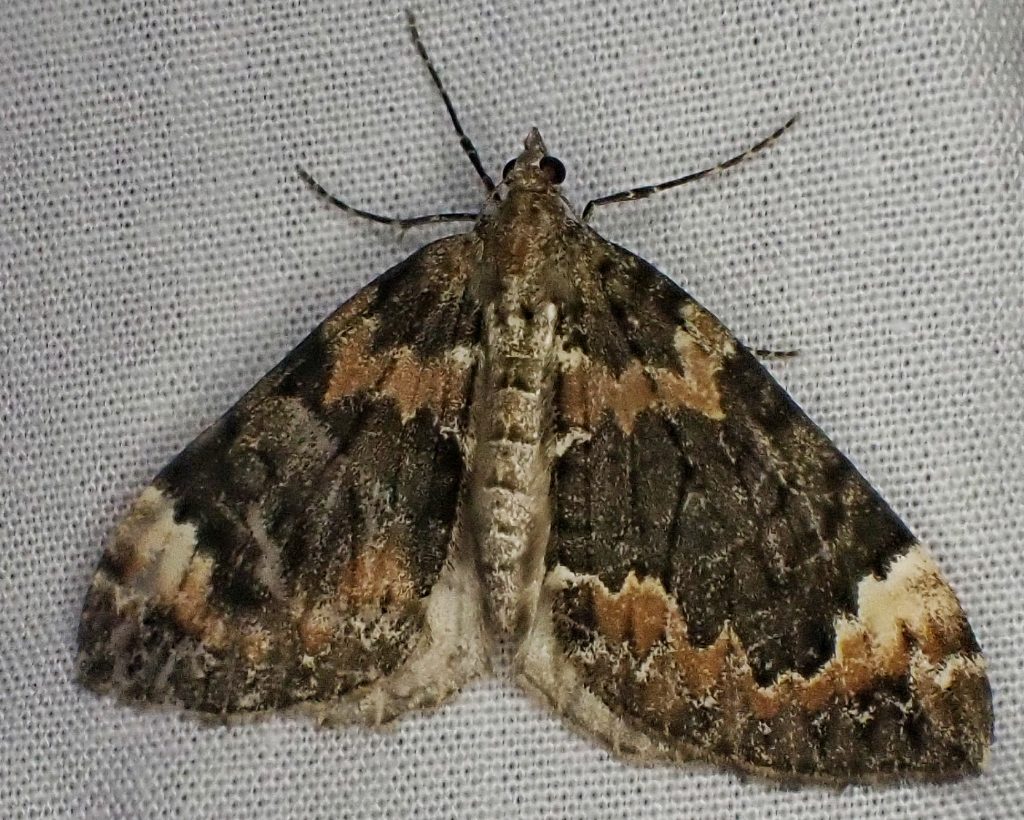
This is the pretty, colorful geometrid moth I mentioned in ‘First mothing trip of the year, Dysstroma citrata (the dark marbled carpet moth, which is also sometimes called the northern marbled carpet moth). This is a common and widespread (found all across the northern Northern Hemisphere) woodland moth, with a list of larval hosts as long as your leg, and I had thought immediately that it was D. citrata, based on the size of the white patch near the edge of the wing, the amount of orangey tan on the forewings, and the way the medial line dips sharply into two thin lobes. Then I went to confirm that and started to doubt myself, because there are some D. truncata photos that look very similar.
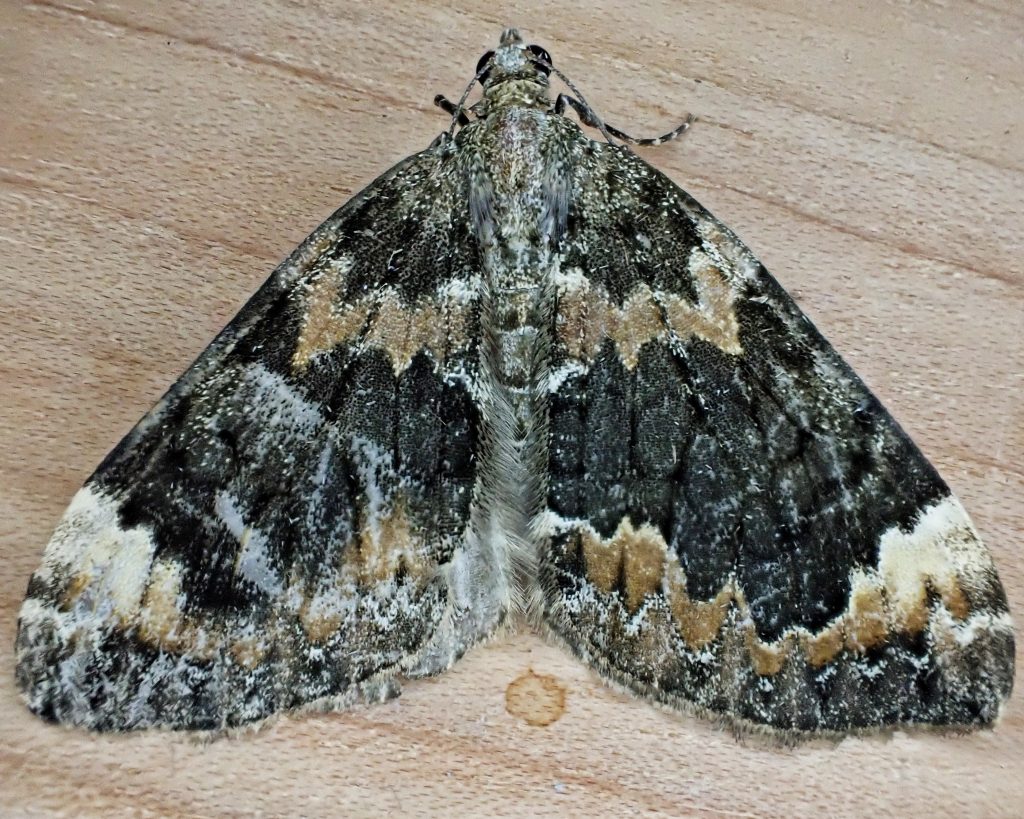
But then I found the British Lepidoptera site, where Chris Lewis says “ Hindwing median cross-line has a pointed ~90 degree angle in D.citrata and a rounded obtuse angle in D.truncata – best seen on underside” 098 Dysstroma citrata (Dark Marbled Carpet) – British Lepidoptera, which not only helped confirm my identification but is a useful trait to know in general, because added to the similarity of many Dysstroma spp., and the variation within each species, is the fact that they periodically perch with their wings up (in my experience they especially like to do this on the more vertical surfaces), so one cannot even see the dorsal forewing.
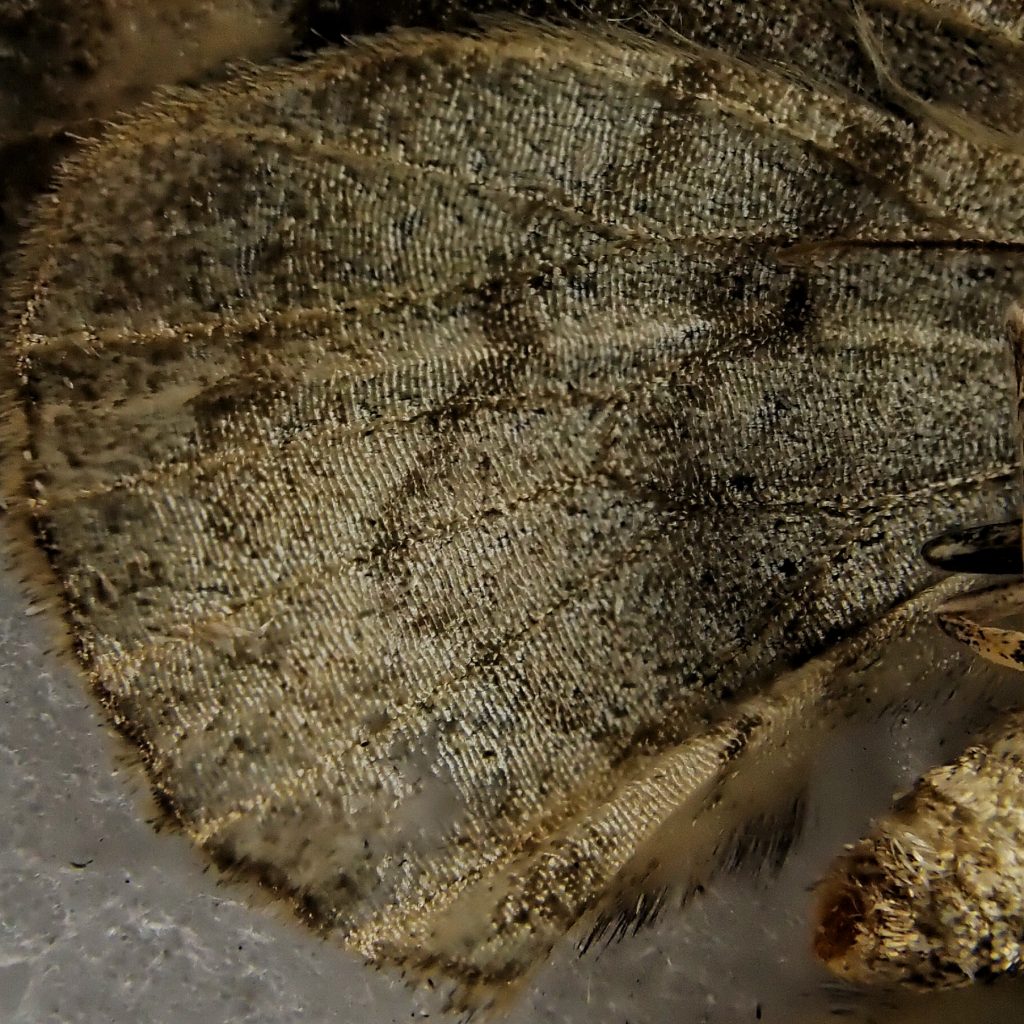
Description– “wingspan 28-32 mm…The description given at the USGS site (“Forewing with a black median band, a dark brown basal band, and a yellow apical patch.”) apparently applies to western individuals…Eastern individuals are colored differently: the median band is mostly light gray, the basal band is medium grayish-brown, and there is no yellow apical patch. Both color forms (or subspecies?) share the following characteristic: a PM line that, beginning at the costa, plunges deeply toward the outer margin, then turns basally and continues to the inner margin” Species Dysstroma citrata – Dark Marbled Carpet – Hodges#7182 – BugGuide.Net
Similar species– The various Dysstroma spp. are not only similar, but have wide variation within each species, and comparing many photos of different species is often required for identification; D. truncata usually has less white in the area near the wing margin below the medial line, the medial line itself has a less pronounced dip toward the terminal margin, with shorter and less pointed prongs, and the medial line on the ventral hindwing is rounded and forms an obtuse angle.
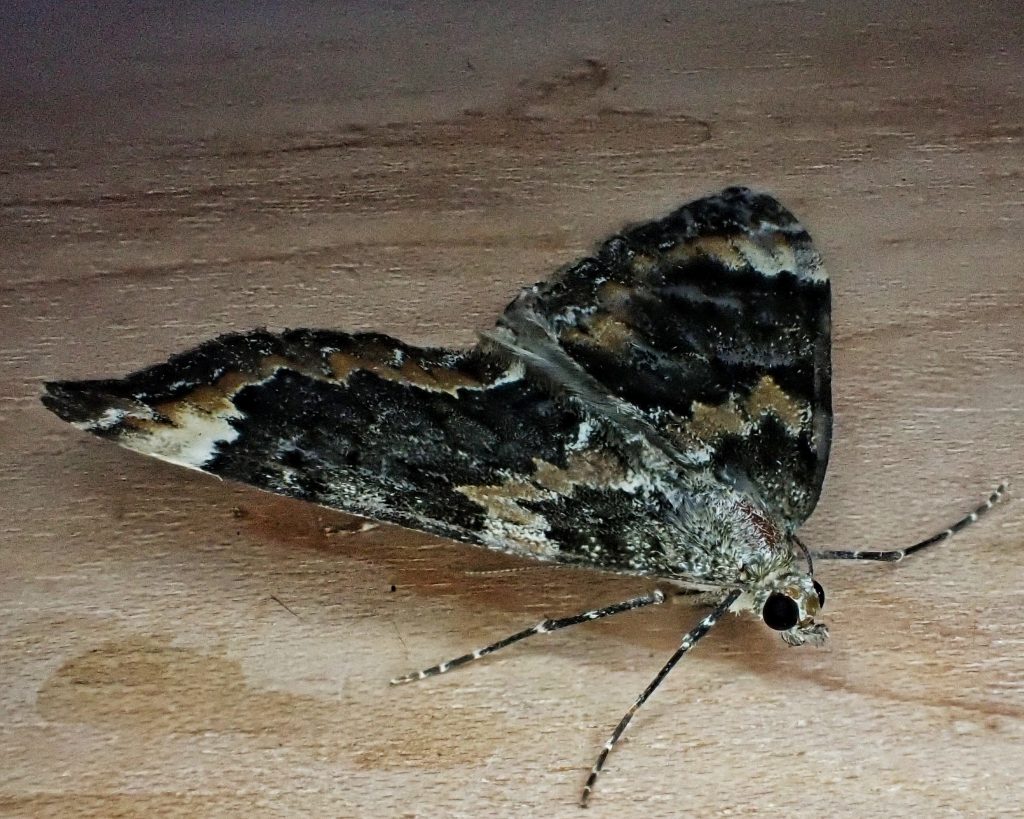
Habitat– “mixed and deciduous forests; adults are attracted to light” Species Dysstroma citrata – Dark Marbled Carpet – Hodges#7182 – BugGuide.Net
Range– “northern US plus every province and territory in Canada (and probably Alaska), south in the west to California, south in the east to Maryland; holarctic; occurs throughout Eurasia” Species Dysstroma citrata – Dark Marbled Carpet – Hodges#7182 – BugGuide.Net
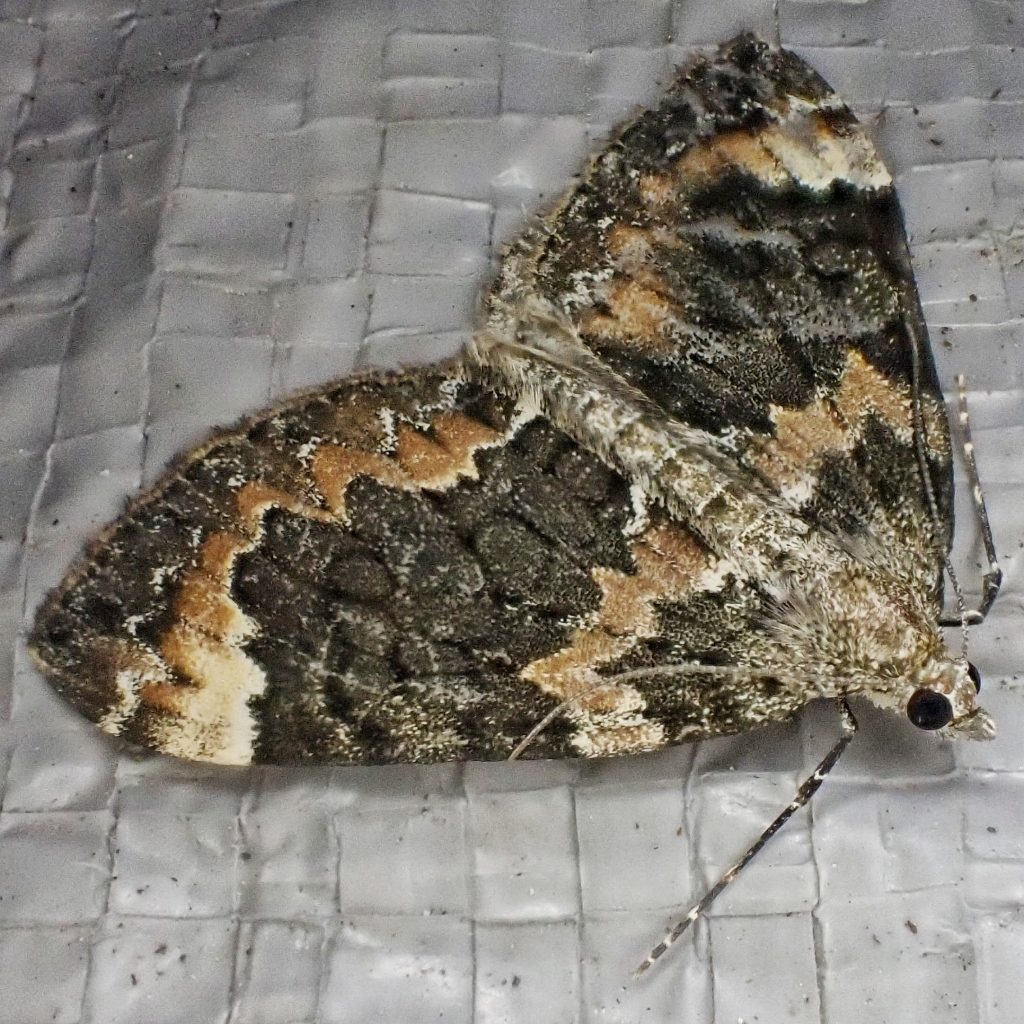
Eats– “larvae feed on leaves of Rubus species (raspberry, bramble, thimbleberry), Alnus (alder), Salix (willow), Western Hemlock, and perhaps Stinging Nettle” Species Dysstroma citrata – Dark Marbled Carpet – Hodges#7182 – BugGuide.Net; “Larva on Vaccinium , V. myrtillus, V. uliginosum, Aster tripolium [SPRK], Betula ermanii, Salix , Ledum palustre, Calluna vulgaris, Epilobium angustifolium, Betula pendula, Fragaria vesca, Rubus idaeus, Alchemilla alpina, Crataegus , Rosa , Alnus rubra, Betula occidentalis, Mertensia , Symphoricarpos , Arbutus menziesii, Ribes , Larix laricina, Tsuga heterophylla, Potentilla egedii, Rubus allegheniensis, Rubus vitifolius, Geum macrophyllum, Malus , Prunus virginiana, Sorbus , Populus tremuloides” Savela, Markku. “Dysstroma Hübner, 1825″. Lepidoptera and Some Other Life Forms.
Eaten by– Presumably any insectivore that can catch and subdue them; larvae and eggs are undoubtedly hosts to some species of wasps or flies, but I can find no information specific to this species.
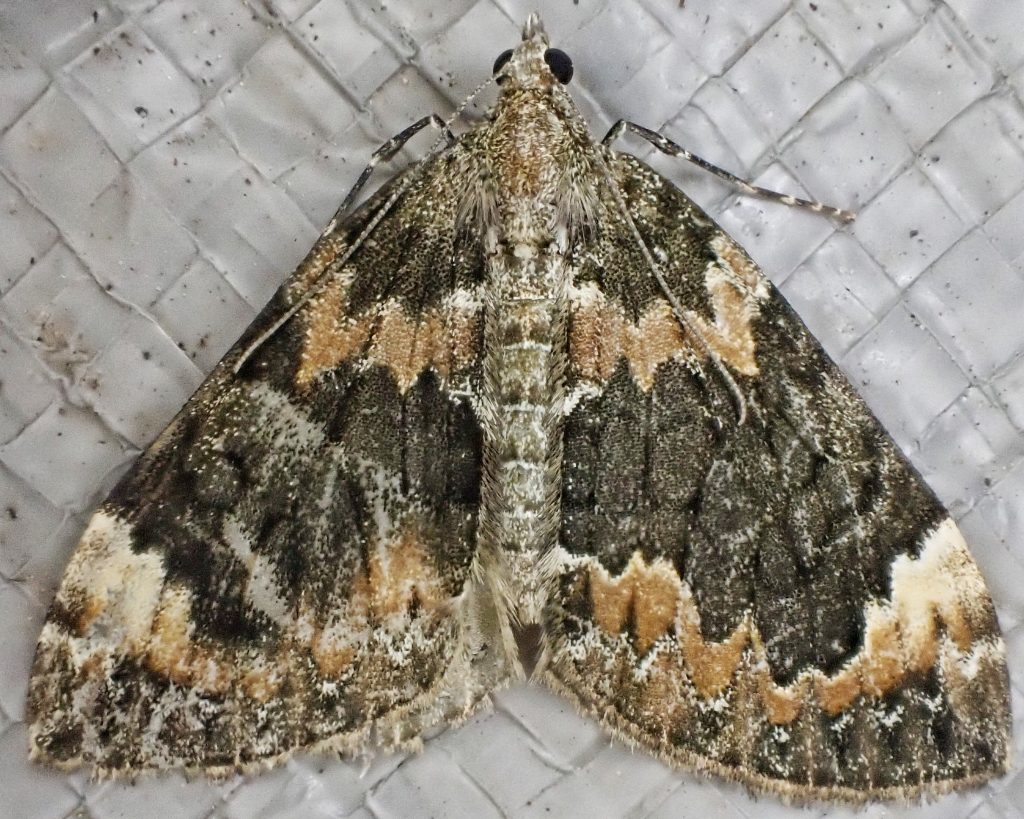
Adults active– “adults fly from July to September” Species Dysstroma citrata – Dark Marbled Carpet – Hodges#7182 – BugGuide.Net
Life cycle– “overwinters as an egg; one generation per year…When disturbed, the larva rolls its head under the thorax, a behavior described as “bashful” in the caption of the illustrative photo by Jeremy Tatum.” Species Dysstroma citrata – Dark Marbled Carpet – Hodges#7182 – BugGuide.Net
Etymology of names– Dysstroma seems to be from a Greek prefix denoting’ bad/trouble/unlucky/hard’ and the Greek word for ‘mattress/bed’, although I have no idea what this refers to. The specific epithet citrata is from the Latin word for the citron tree, and refers to the orange color often seen on the forewings of this species.
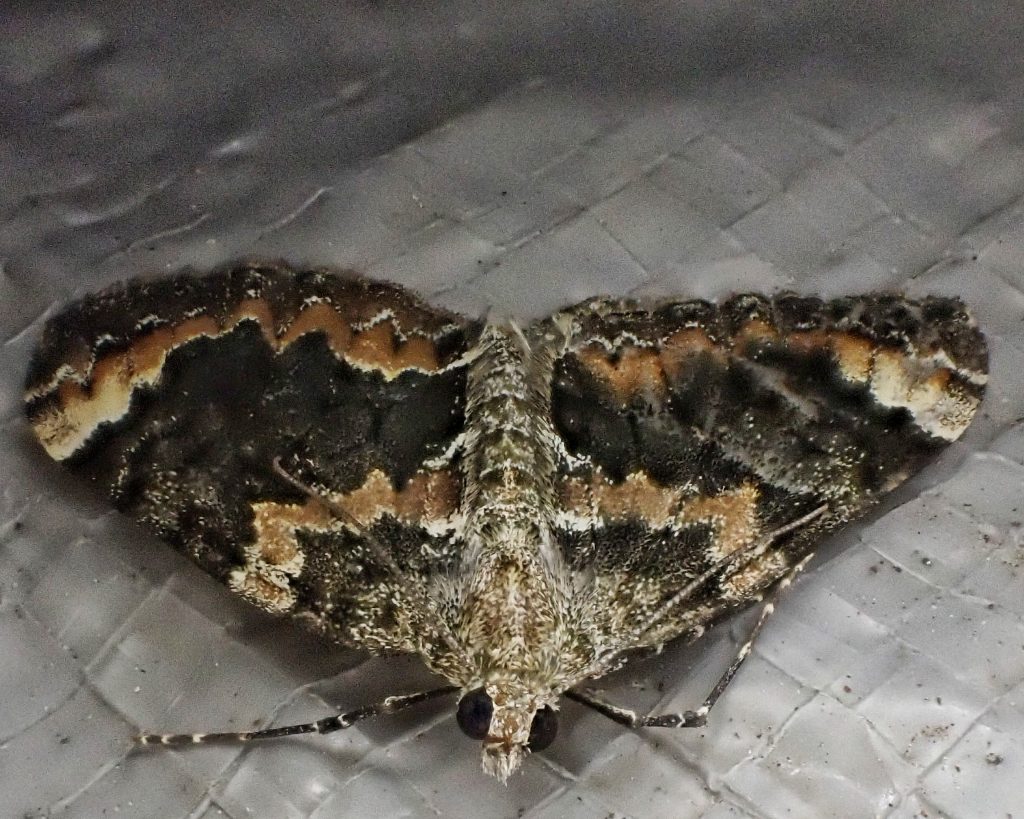
Species Dysstroma citrata – Dark Marbled Carpet – Hodges#7182 – BugGuide.Net
http://mothphotographersgroup.msstate.edu/species.php?hodges=7182
https://en.wikipedia.org/wiki/Dysstroma_citrata
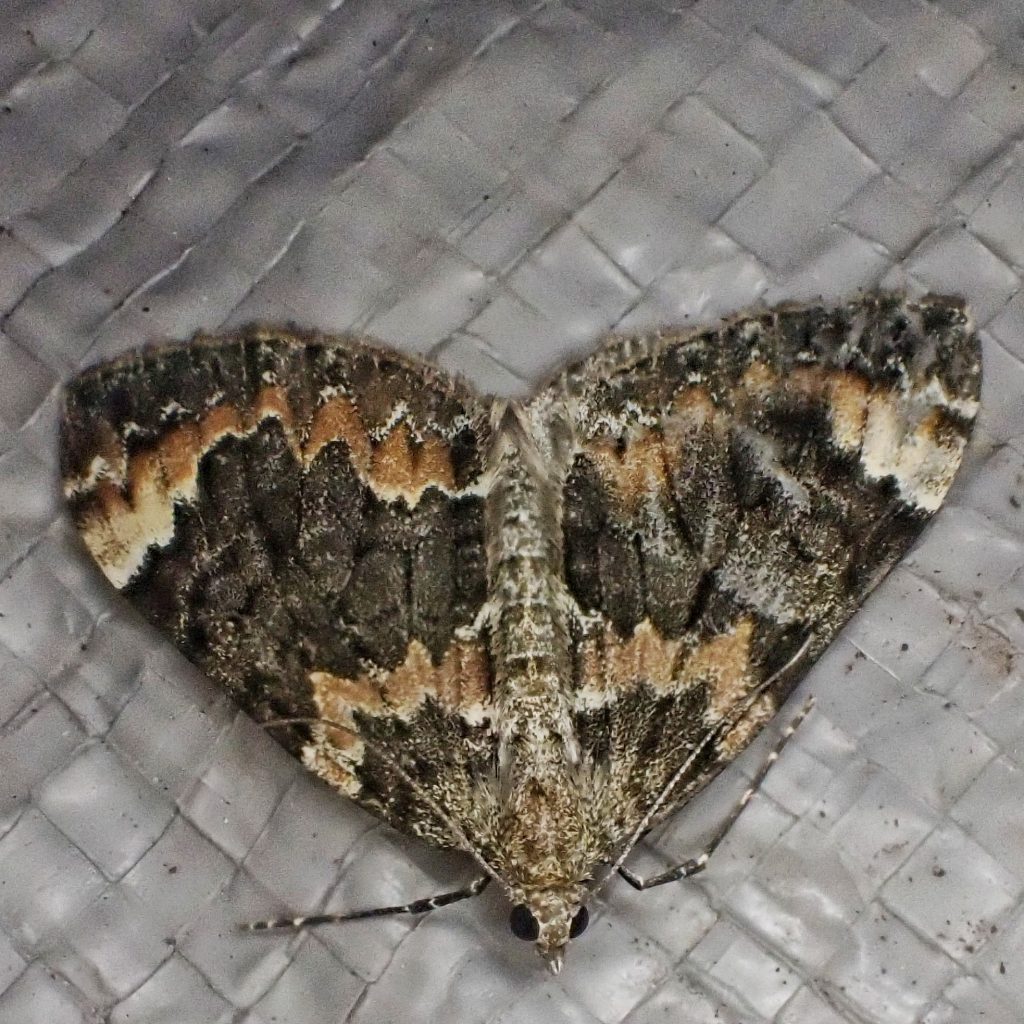
2 thoughts on “Dysstroma citrata (Dark Marbled Carpet Moth)”